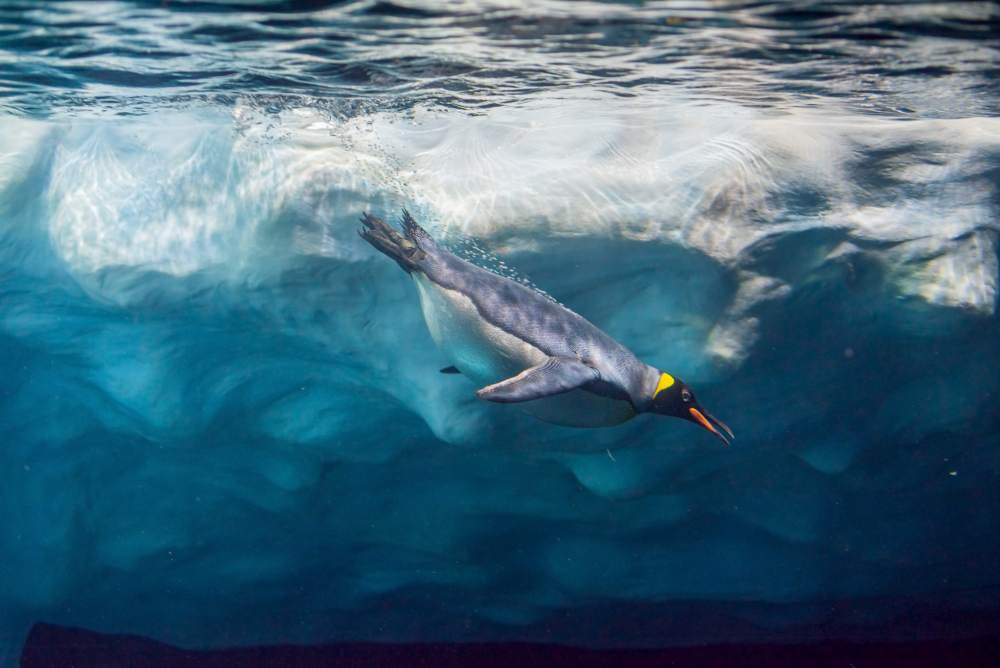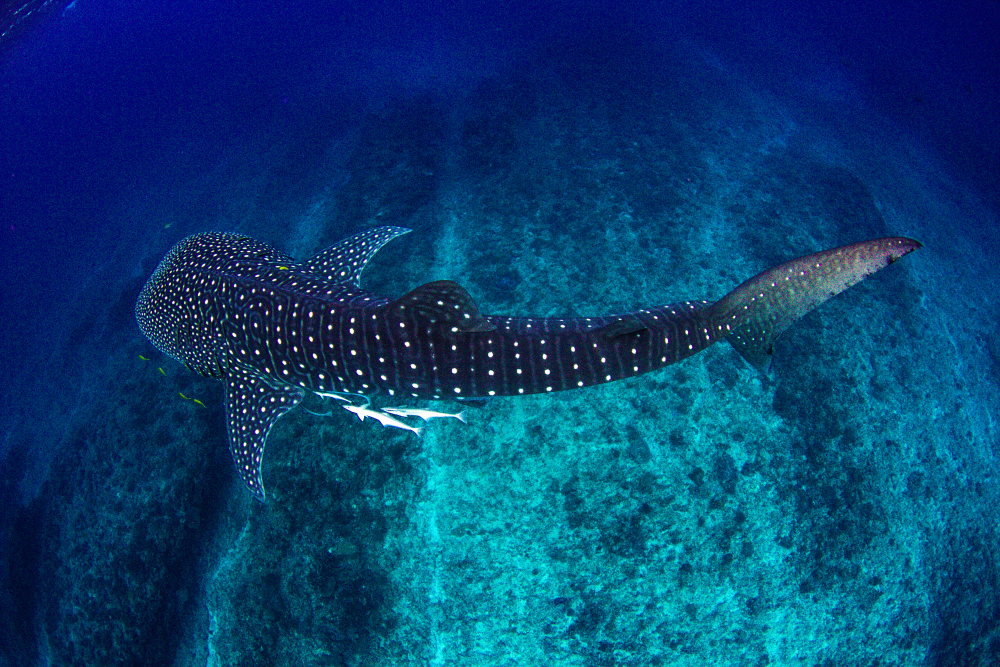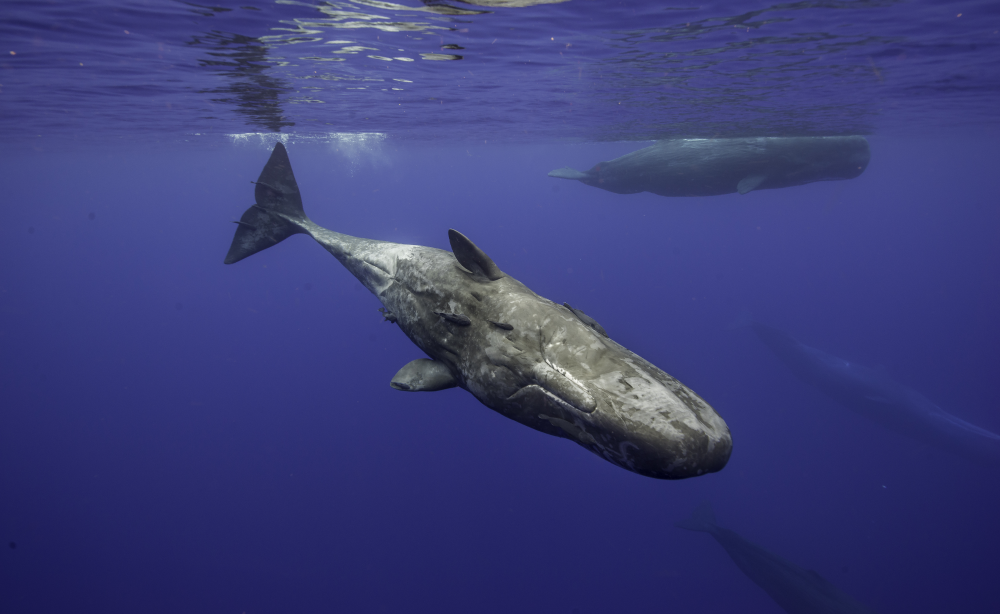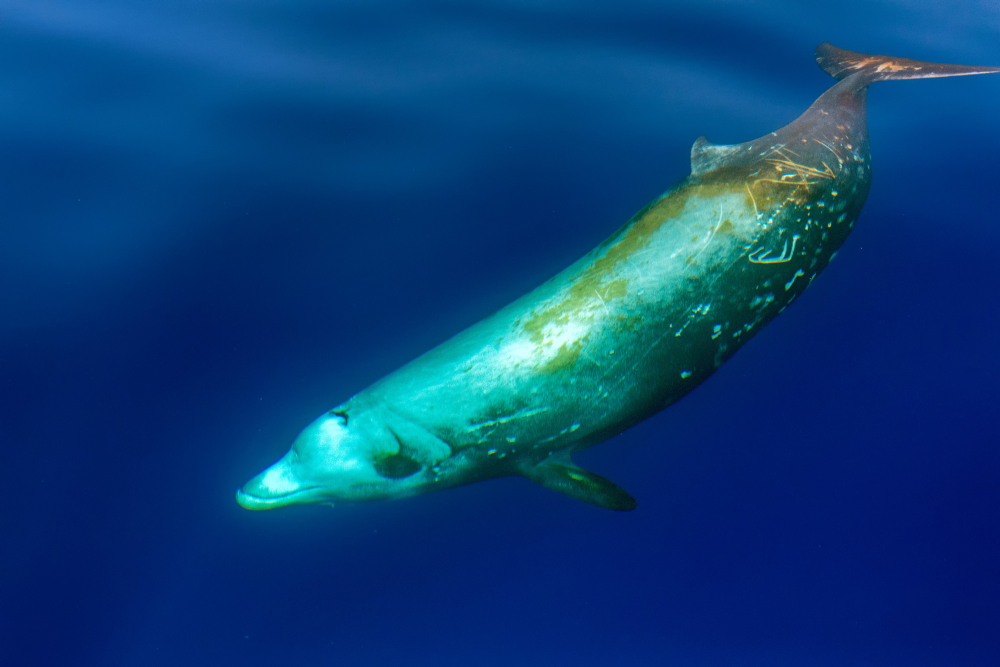Humans piloting remote-operated vehicles (ROVs) along the seabed have turned up all kinds of surprises, from snailfish at the deepest depths ever recorded to fur seals more than 150 meters (492 feet) below the surface. In fact, that’s only half the depth that fur seals have been recorded going, so how much more extreme can it get?
What other kinds of animals are plunging into the ocean’s depths? Five of the deepest diving animals on the planet include mammals, birds, reptiles, and sharks.
500 meters – Emperor penguins (Aptenodytes forsteri)

Emperor penguins waddle on land but soar under the water.
Image credit: David Herraez Calzada / Shutterstock.com
Few creatures are less agile on land than penguins. Unable to fly, these lumbering birds waddle from point A to point B, seemingly exerting enormous amounts of energy while making little progress. Put them in the water, however, and it’s a very different story.
Emperor penguins aren’t the fastest swimmers, but they can swim deeper and for longer than any other species of bird. They can remain submerged for up to 27 minutes as they zoom down to depths of 500 meters (1,640 feet), reports the University of Bristol, lowering their heart rate from 70 beats per minute to just 10.
1,200 meters – Leatherback turtles (Dermochelys coriacea)
The deepest diving reptile is the leatherback turtle, which according to CSIRO can dive down to a staggering 1,200 meters (3,937 feet). To find out how they were doing it, the authors of a 2010 paper attached accelerometers to female turtles nesting in the Virgin Islands.
It found that they descend steeply in an active swimming phase, before gliding, and then ascending slowly to avoid decompression sickness. The authors also suggested that the turtles’ low body temperature may help them avoid the nitrogen bubble formation that characterized the bends.
1,900 meters – Whale sharks (Rhincodon typus)

Image credit: Leith Holtzman / Shutterstock.com
The deepest diving fish also happens to be the largest, a title that’s claimed by whale sharks. It’s perhaps a little surprising as these filter-feeding gentle giants are typically found cruising nearer the surface, but a 2015 study that used tags to record whale sharks’ movements identified some extreme dives, the deepest of which was 1,928 meters (6,325 feet), and several of which saw the animals pause momentarily.
“Nearly half of these extreme dives had descent profiles with brief but conspicuous changes in vertical direction at a mean depth of 475 m [1,558 feet],” they wrote. “We hypothesize these stutter steps represent foraging events within the deep scattering layer, however, the extreme dives may have additional functions.”
That deep scattering layer is what made it look like the seabed was moving to WWII technicians using sonar for the first time. In truth, it’s just a wall of millions of migrating animals.
2,250 meters – Sperm whale (Physeter macrocephalus)

Sperm whales’ deep diving means giant squid are on the menu.
Image credit: wildestanimal / Shutterstock.com
Sperm whales are frequent visitors to an area of the ocean known as the twilight zone, a murky place that’s lacking in light but home to one of their favorite meals: giant squid. A lot of what we know about deep-sea giant squid is actually based on what we’ve been able to find in the stomachs of sperm whales.
The sperm whale isn’t the deepest diving whale, but it holds the record for surface-dwelling animals. According to the University of Hawai’i, they’ve adapted specialized ribs and lungs that can collapse under pressure so that the air is concentrated into a small space, and their heart slows as they plunge down to 2,250 meters (7,382 feet).
2,992 meters – Cuvier’s beaked whale (Ziphius cavirostris)

The cuvier’s beaked whale is a rare sight, spending very little time at the surface.
Image credit: Andrea Izzotti / Shutterstock.com
The title of the deepest diving whale goes to the cuvier’s beaked whale. These record-breaking marine mammals also claimed the longest dive record in 2020, remaining underwater for three hours and 42 minutes. According to London’s Natural History Museum, briefly shutting down certain organs can help them survive on these long and deep dives.
Cuvier’s beaked whales are elusive and little is really known about them as they spend most of their time underwater, surfacing infrequently. They are well known for being the ocean’s diving champions though, also smashing the record for deepest dive, at 2,992 meters (9,816 feet).
Clearly, there’s a lot to explore beneath the waves. Time to get working on some collapsible lungs, Homo sapiens.
Source Link: The Deepest Diving Animals On Earth Shutdown Organs To Avoid The Bends